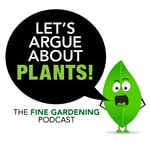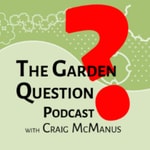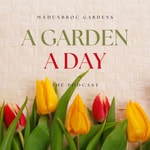Let's Argue About Plants – Details, episodes & analysis
Podcast details
Technical and general information from the podcast's RSS feed.

Let's Argue About Plants
Fine Gardening Magazine
Frequency: 1 episode/15d. Total Eps: 99

Recent rankings
Latest chart positions across Apple Podcasts and Spotify rankings.
Apple Podcasts
🇨🇦 Canada - hobbies
01/08/2025#20🇺🇸 USA - hobbies
01/08/2025#52🇺🇸 USA - hobbies
31/07/2025#56🇺🇸 USA - hobbies
30/07/2025#36🇬🇧 Great Britain - hobbies
29/07/2025#87🇺🇸 USA - hobbies
29/07/2025#39🇨🇦 Canada - hobbies
28/07/2025#82🇬🇧 Great Britain - hobbies
28/07/2025#56🇺🇸 USA - hobbies
28/07/2025#30🇨🇦 Canada - hobbies
27/07/2025#78
Spotify
No recent rankings available
Shared links between episodes and podcasts
Links found in episode descriptions and other podcasts that share them.
See allRSS feed quality and score
Technical evaluation of the podcast's RSS feed quality and structure.
See allScore global : 53%
Publication history
Monthly episode publishing history over the past years.
Episode 165: Not Your Typical Ground Covers
vendredi 16 août 2024 • Duration 56:43
The best ground covers are multi-purpose workhorses, suppressing weeds, preventing soil erosion, and adding another level of interest to garden beds. Naturally, we’d prefer them not to be invasive, and to look good over a long season. But why do so many gardeners seem to fall back on the same few choices? In this episode, Danielle, Carol, and expert guest Amanda Thomsen cover new ground in their quest to expand the definition of what a ground cover can be. Whether it’s a tough but underused North American native, a cheeky little annual, or an unusual self-seeding edible, we hope you will find something unexpected but garden-worthy in this episode.
Expert: Amanda Thomsen is the author of Kiss My Aster: A Graphic Guide to Creating a Fantastic Yard Totally Tailored to You and owner of the Aster Gardens plant shop in Lemont, Illinois.
Episode 164: The Joys of Plant Exploration with Mark Weathington
vendredi 2 août 2024 • Duration 50:08
Mark Weathington is the director of the JC Raulston Arboretum at NC State University in Raleigh, North Carolina and author of Gardening in the South: The Complete Homeowner’s Guide. Mark is a frequent FG contributor, covering a wide range of topics including magnolias, redbuds, compact shrubs, and unexpected replacements for overused plants. Some of Mark’s most fascinating work at the arboretum has involved his extensive travel to collect, preserve, and distribute plants from around the world. In this episode he discusses the unexpected path that led to a career in horticulture and the international collaborations that are helping to conserve endangered species and bring diversity to American landscapes.
Episode 155: Deer Resistant Favorites
vendredi 22 mars 2024 • Duration 55:12
One of the worst sights you can ever see in the garden is a plant that has been browsed by deer. (Sidenote: we don't love the gentle word “browsed” in this instance. A more appropriate term might be “obliterated.”) If the munching is particularly bad, that perennial, tree, or shrub becomes unrecognizable. And in many cases, this can mean instant death to your prized specimen. With deer pressure increasing from coast-to-coast, we decided it’s time to highlight some of our favorite deer-resistant plants. Yes, we’re from deer-ridden New England, but rest assured that we’ve included plants in this episode that will thrive from Texas to Michigan, and everywhere in between.
Guest: Karen Chapman is a landscape designer in Duvall, Washington, and the author of Deer-Resistant Design: Fence Free Gardens that Thrive Despite the Deer.
Danielle's Plants
'Childhood Sweetheart' hellebore (Helleborus 'Childhood Sweetheart', Zones 4-9)
Winter daphne (Daphne odora, Zones 7-9)
'Bonfire' euphorbia (Euphorbia polychroma 'Bonfire', Zones 5-9)
Sunshine Blue® blue mist shrub (Caryopteris incana 'Jason', 5-9)
Carol's Plants
Hiba arborvitae (Thujopsis dolobrata 'Variegata’, Zones 5-8)
‘Victoria Blue’ mealycup sage (Salvia farinacea 'Victoria Blue', Zones 8-10)
Eastern sweetshrub, syn. Carolina allspice (Calycanthus floridus, Zones 4-9)
‘Gerald Darby’ iris (Iris × robusta 'Gerald Darby', Zones 4-9)
Expert’s Plants
Magical® Fantasy weigela (Weigela florida 'Kolsunn', Zones 4-8)
Threadleaf bluestar (Amsonia hubrichtii, Zones 5-8)
'Whirling Butterflies' gaura (Gaura lindheimeri 'Whirling Butterflies', Zones 5-9)
'Goldsturm' black-eyed Susan (Rudbeckia fulgida var. sullivantii 'Goldsturm', Zones 3-9)
Episode 154: Putting Plants to the Test with Richard Hawke
vendredi 8 mars 2024 • Duration 01:00:14
Richard Hawke is the Director of Ornamental Plant Research at Chicago Botanic Garden, where he oversees comparative evaluations of ornamental plants. The CBG Plant Evaluation Program has included 117 distinct trials over the past four decades, with 26 comparative trials currently underway in three evaluation areas. In 2011, Richard began reporting trial results in Fine Gardening magazine, and has since written dozens of feature articles that can be found by visiting his author page.
In this entertaining episode, Richard Hawke discusses his earliest memories of plants and gardening, the education and internships that laid the foundation for his career, and the joys and challenges of developing a world-class plant trial program. He also digs into the day-to-day details of plant evaluation and talks about some trials that yielded surprising results and some that were particular favorites, including evaluations of clematis, baptisias, butterfly bushes, and tender salvias.
Richard joined the staff of the Chicago Botanic Garden in the mid-1980s.
CBG’s trial of tender salvias identified many vigorous cultivars that do well when grown as annuals.
The Chicago Botanic Garden has trialed 198 heucheras since 1995. Find out which cultivars performed better than the classics here.
The Chicago Botanic garden was built on a series of islands, and soil conditions are not ideal. The original trial beds were atop a substrate of clay soil compacted by heavy equipment; the water table is very high, and drainage can be problematic. Richard talks about these soil woes, and the solutions that have improved soil structure and drainage in the newest plant evaluation area.
The Chicago Botanic Garden was built on a series of islands with heavy clay soil.
Field evaluation is a core component of plant trials at Chicago Botanic Garden.
The Green Roof Gardens built atop the Plant Conservation Science Center are used to evaluate the suitability of plants for use in green roof assemblies.
With 26 trials currently underway, the evaluation areas at the Chicago Botanic Garden are a hub of research activity.
Richard now spends much of his time behind a desk, which makes him relish his time in the field even more.
The Plant Evaluation Program at Chicago Botanic Garden is one of the largest and most diverse in the nation.
Episode 153: Compact Plants for Tight Spaces
vendredi 16 février 2024 • Duration 56:27
Every gardener wishes they had 25 acres to garden on, right? Well maybe not, but most of us do dream of a healthy amount of ground to build beds and borders to our hearts’ desire. The reality of homeowners today, however, is that land is expensive and typical suburban lots have decreased in size steadily since the 1970s. And smaller lots mean smaller gardens. That isn’t an issue though, if you select plants that are polite and “stay in their lane” as the kids say. On this episode Danielle and Carol talk about compact plants that are prefect for tighter spaces. We’ve got several perennials, one annual, and even a few well-behaved shrubs that made the list. Filling your tiny plot with these beauties will enable you to have a wide variety of colors and textures without sacrificing an enormous amount of precious square footage.
Julie Lane Gay lives and gardens in Vancouver, British Columbia, where she previously owned a nursery specializing in climbers and perennials.
Danielle's Plants
Creeping variegated gardenia (Gardenia jasminoides 'Radicans Variegata', Zones 8-11)
'Prairie Moon' rattlesnake master (Eryngium yuccifolium 'Prairie Moon', Zones 3-8)
Spicy Devil ® ninebark (Physocarpus opulifolius 'ZLENATALIE', Zones 3-7)
'Jack of Diamonds' brunnera (Brunnera macrophylla 'Jack of Diamonds', Zones 3-8)
Carol's Plants
Ivory Halo® dogwood (Cornus alba 'Bailhalo’, Zones 3-7)
‘Rainbow Bouquet’ dwarf strawflower (Helichrysum bracteatus ‘Rainbow Bouquet’, annual)
Let's Dance Sky View® hydrangea (Hydrangea macrophylla × serrata 'SMNHSME', Zones 4-9)
‘Summer Beauty' allium (Allium tanguticum 'Summer Beauty', Zones 4-9)
Expert’s Plants
'Brunette' baneberry (Actaea simplex 'Brunette', Zones 3-8)
'Firepower' heavenly bamboo (Nandina domestica 'Firepower', Zones 6-9)
‘Adirondack’ crabapple (Malus 'Adirondack', Zones 4-8)
Solitary clematis (Clematis integrifolia, Zones 4-7)
Episode 152: Best of LAAP: Best of Our Listener Q & As
vendredi 2 février 2024 • Duration 01:10:42
One of our favorite things to do here on the pod is dig through emails and social media shout outs from our listeners. It is always nice to hear about what problems you may be having in your gardens and to be able to offer advice from our decades of horticultural experience. And we’re lucky to have scores of experts at our fingers tips if we don’t have an answer for a plant suggestion or design fix. These Q&A episodes are some of our favorites, so we decided to revisit an array of your best questions from the past few years in this new Best Of LAAP. The inquiries included advice on planting under trees, attracting hummingbirds, and info about what garden tasks we hate tackling. Tune in to see if one of our favorite questions was yours, or to hear about some solutions to problems that tend to plague us all.
Links to all our Q&A episodes:
Episode 151: Underappreciated Plants for Winter Interest
vendredi 19 janvier 2024 • Duration 01:01:53
During the winter months many plants reveal subtle patterns, fine details, and a new range of colors that help us to see familiar beds and borders with fresh eyes. This is an excellent time to get outside, evaluate your garden’s bones, and make some plans for spring planting. In this episode Danielle, Carol, and their guest will explore some of the plants that fly a bit under the radar in winter months, but certainly deserve more attention. Do you have any of these underappreciated wonders in your landscape? If not, you may want to start digging holes as soon as the ground thaws to ensure that some of these unsung heroes get some well-deserved garden real estate. Will any of these winter beauties make it onto your wish list this year?
Jay Sifford is the owner and principal designer at Jay Sifford Garden Design in Charolette, North Carolina.
Danielle's Plants
Spotted wintergreen (Chimaphila maculata, Zones 4-8)
‘Peppermint Patty’ bergenia (Bergenia 'Peppermint Patty', Zones 4-8)
Moosewood (Acer pensylvanicum, Zones 3-7)
‘ReJoyce’ drooping laurel (Leucothoe axillaris 'ReJoyce', Zones 6-9)
Carol's Plants
Golden Duke Eastern hemlock (Tsuga canadensis ‘Monjers’, Zones 4–8)
American hornbeam (Carpinus caroliniana, Zones 3b–9)
'Little Heath' pieris (Pieris japonica 'Little Heath’, Zones 5–9)
‘St. Mary’s Broom’ blue spruce (Picea pungens ‘St. Mary’s Broom’, Zones 2-7)
Expert’s Plants
American witch hazel (Hamamelis virginiana, Zones 3-8)
'Shades of Pink' laurustinus (Viburnum tinus 'Shades of Pink', Zones 7b-10)
Blue conifers with assorted ornamental grasses
'Louie’ white pine (Pinus strobus 'Louie’, Zones 4-9)
Episode 150: Design Rules of Thumb with Stacie Crooks
vendredi 5 janvier 2024 • Duration 56:35
Stacie Crooks is a Seattle-based garden designer who has created beautiful, ecologically friendly, low-maintenance gardens throughout the Pacific Northwest. She is also a contributing editor for Fine Gardening magazine and has shared her insights with our readers through 10 feature articles and several departments over the past 17 years. In this episode, Carol interviews Stacie about the lessons that she has gained from her years of garden design experience.
Stacie Crooks’s Garden Design Rules of Thumb
1. Identify your project. Ask yourself "What do I want to achieve?" and “Why do I want to do this?" Having a clear goal in mind- be it lower maintenance, better curb appeal, or more wildlife in the garden- will help you make the right design, style, and plant choices.
2. Know your site. Before you can make any changes, you need to know your limitations. Determine the garden's light exposure and angles, soil types, drainage, topography, and size. Consider irrigation (if you need water, where will it come from?) and access (how will you get into the garden and move through it?) Bearing all this in mind, set a budget.
3. Get inspired. With your goals and guidelines clear, It's time for a solid plan. People always ask, “Where do I start?" Engage in activities that foster learning and friendships. Read books and magazines and go to lectures. Join a garden club. Volunteer at a public garden. Look in the newspapers and on the internet for opportunities. Take notes, make lists and make sketches. Take photos of gardens you visit and copy them.
4. No zone denial. When you go to buy your plants at your local nursery, read the tags carefully. Choose only that which is suited for your site and to your lifestyle. If it is not clear, ask a nursery person. Be sure that the amount of care that plant needs match the time and energy you can afford.
5. Finish one garden before you start another. Resist buying plants that are not for your current project- they'll just die waiting for you to plant them. Stick to the list.
6. Be responsible environmentally. Always aim to use less water, less fertilizer, and no chemicals. The better you know your site, the easier it is to achieve success naturally. There's an importance to NOT gardening, using fewer resources and less labor and just enjoying your space more.
Episode 149: Silver Plants
vendredi 15 décembre 2023 • Duration 48:40
Plants with a silvery sheen stand out beautifully against the sea of green that fills most garden beds. In this episode, Danielle, Carol, and their guest will highlight some shimmering shrubs, drought-tolerant perennials, a tiny dwarf conifer, and even an unusual silvery vine with a bit of a back story. Perhaps one of these lovely, luminous plants could be the silver bullet solution to one of your own garden design dilemmas.
Chloë Bowers, a garden designer based in southwestern Connecticut, is the moderator for Fine Gardening’s Northeast Gardening Answers forum. Join the conversation here: https://www.finegardening.com/discussion-forum/northeast-gardening
Danielle's Plants
'Quicksilver' hebe (Hebe pimelioides 'Quicksilver', Zones 7b-9)
Woolly thyme (Thymus pseudolanuginosus, Zones 5-9)
Silver sage (Salvia argentea, Zones 5-8)
'Angel Wings' sea cabbage (Senecio candicans 'Angel Wings', Zones 8–10)
Carol's Plants
‘Pimoko’ Serbian spruce (Picea omorika ‘Pimoko’, Zones 4-9)
Sea kale (Crambe maritima, Zones, Zones 5-9)
'Elijah Blue' fescue (Festuca glauca 'Elijah Blue', Zones 4-8)
‘Kintzley’s Ghost’ honeysuckle vine (Lonicera ‘Kintzley’s Ghost’, Zones 4-8)
Expert’s Plants
Pussytoes (Antennaria plantaginifolia, Zones 3-8)
Blunt mountain mint (Pycnanthemum muticum, Zones 4-8)
Pearly everlasting (Anaphalis margaritacea, Zones 3-8)
Prairie sage (Artemisia ludoviciana, Zones 3-7)
Episode 148: Wish List Plants
vendredi 1 décembre 2023 • Duration 01:05:37
Oh, dear listeners...it’s the most glorious time of the year! No, not because it’s time to hang the stockings or trim the tree—because it’s time to make the 2024 gardening wish lists. This year Carol and Danielle have selected the 8 plants they are pining over most. You will hear about a brand-new perennial that few, if any, have seen before. And there’s also a new hydrangea with...brace yourselves...BLACK foliage! The list also includes plants that our contributors have written extensively about, and we’ve just now sat up and paid attention. Listen now to hear about the plants we’ll be dreaming about as the flakes fly this winter.
Expert guest: Jennifer Benner is content editor for Fine Gardening. She has a bachelor’s degree in horticulture from The Ohio State University.
Danielle's Plants
'Blue Bunchkin' baptisia (Baptisia 'Blue Bunchkin', Zones 4-9)
‘Nichirin’ false nettle (Boehmeria nipononivea ‘Nichirin’, Zones 6-9)
Eclipse® bigleaf hydrangea (Hydrangea macrophylla ‘Bailmacseven’, Zones 5–9)
'Fusion of Fire' oredenia (Oredenia 'Fusion of Fire', Zones 5-8)
Carol's Plants
'Humilis' red buckeye (Aesculus pavia 'Humilis', Zones 4-8)
Blackberry lily (Iris domestica, Zones 5-10)
‘Hillside Sheffield Pink’ garden mum (Chrysanthemum ‘Hillside Sheffield Pink’, Zones 4-9)
Tropicanna canna Lily (Canna ‘Phasion’, Zones 7b to 10)
Expert’s Plants
‘The Blues’ little bluestem (Schizachyrium scoparium ‘The Blues’, Zones 3-9)
Acapulco® Salmon and Pink agastache (Agastache ‘Salmon and Pink’, Zones 5-9)
‘Orange’
‘Jelena’ witch hazel (Hamamelis x intermedia ‘Jelena, Zones 5-8)







